Are you having a hard time deciding whether to get a ceramic sink or a stainless steel sink for your house? It can be tough to choose because both materials are beautiful and functional at the same time. They are easy to clean, durable, and long-lasting. Even so, are they the same?
According to reports, metallic materials like stainless steel, copper, and cast iron generated a 52.4% share of the overall revenue in 2018.
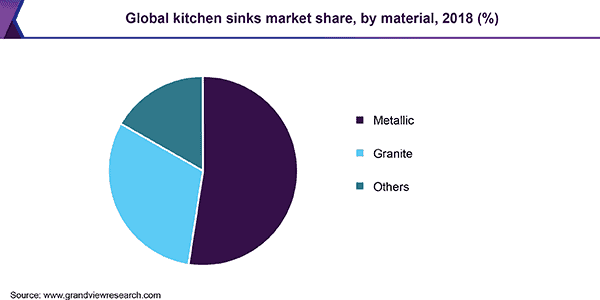
Nonetheless, ceramic sinks have also carved their way into many homes and are getting popular by the day.
Yes, choosing one of these materials can be intimidating.
Hence, in this post, I will discuss the similarities and dissimilarities of both ceramic and stainless steel sink materials. It will help you decide based on your preference, budget, and comfort.
However, before we dive into the differences, let us understand some more details about the two sink materials.
Ceramic Sinks
Did you know?
According to a report, in 2019, ceramic was ranked 1259th with a total trade of $2.12 B.
Ceramic sinks or porcelain sinks are preferred for their beautiful and subtle blend of nature and design. The best part about ceramic is that it amazingly blends with your modern and contemporary house as well as your rustic-themed kitchens.
Besides, ceramic material complements your kitchens as well as bathrooms.
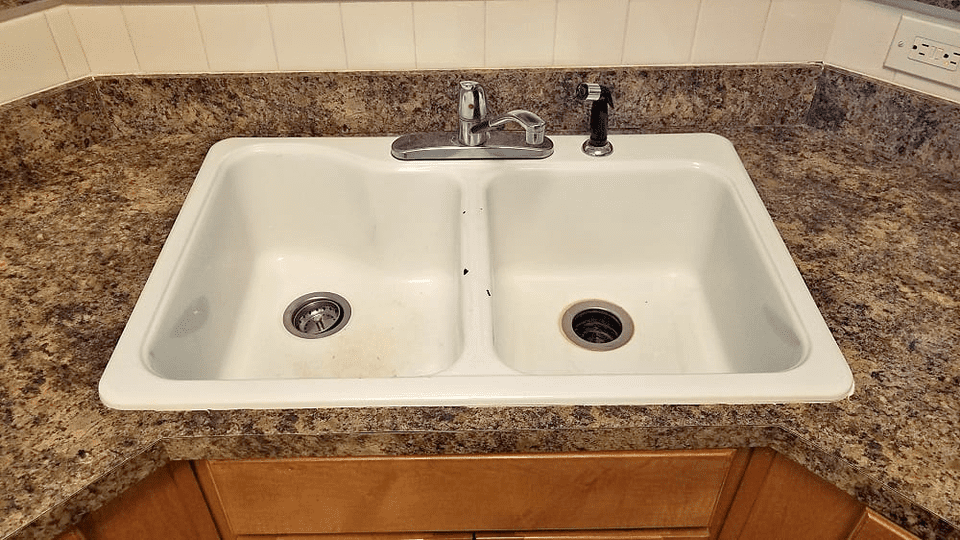
What Is a Ceramic Sink?
A ceramic sink is a composition of natural materials -kaolin clay, quartz, and china clay which molds under tremendously high pressure to create a smooth yet hard-wearing material. The material is then fired in a kiln for 20 hours at extremely high temperatures.
The pros and cons will be discussed in great detail further in the article, but let us briefly overview the pros and cons of the ceramic sinks.
Pros
As the material is treated with high temperatures and composed of natural materials, ceramic sinks offer:
Unique Design Every Time
Each and every ceramic sink is a unique design. It gets its uniqueness from the natural materials and the firing in a kiln above 1200°C. Therefore, you can see that no two ceramic sinks are the same.
Great Durability
During the firing process, the temperature more or less affects the durability of the ceramic.
For instance, if you have a ceramic sink fired in a kiln above 1200°C, and on the other hand, ceramic fired below 1200°C. The ceramic fired above 1200°C will show durability and resistance to staining, scratching, or fading.
The other ceramic will be durable but relatively less than the first and may even increase the chances of staining, scratching, or fading.
Easy to Clean
Due to the low absorption properties of ceramic, it becomes easier to clean and maintain. The smooth yet hard surface prevents the accumulation of dirt and debris. Ceramic, porcelain, and fireclay kitchen sinks are the easiest to clean, according to Buildmat. Although, they are susceptible to scratches and developing hard water deposits on the sink surface.
Sizes, Shapes, and Colors
Ceramic sinks are widely popular for the variety of color schemes they offer. Along with colors, the sinks come in various shapes and sizes, suiting your kitchen or bathroom layouts.
Cons
Although there are benefits to ceramic sinks, they also show some drawbacks.
Risk of Scratching or Chipping
If you exert pressure, sinks made of ceramic material won’t dent, but they can scratch or chip. If the molding and firing process gives durability to ceramic, on the other side, the clay molded in the making of ceramic tends to crack if you exert extreme pressure.
Cost
Yes, the cost becomes a setback for ceramic sinks. Unlike stainless steel, ceramic sinks are expensive. Generally, the price of ceramic sinks starts at around $150. But, the delivery charges, installation, and other expenses combine makes it quite expensive.
Heavyweight
The clays provide sturdiness and strength to the sink nonetheless, making the sink -heavy. And hence, the installation becomes tedious. Additionally, these heavy sinks demand a robust and solid countertop surface to support the sink.
The following data is provided by a leading manufacturer, which will help you analyze the characteristics of ceramic sinks on a scale of 10.

Stainless Steel Sinks
Stainless steel sinks have long been a part of the kitchen world and indeed are never out of style. Almost 70% of the sinks are stainless sinks. Even though there exist different kitchen sink types, stainless steel is used in the majority.
Plus, stainless steel sinks are 100% recyclable, and hence, it is environment-friendly.
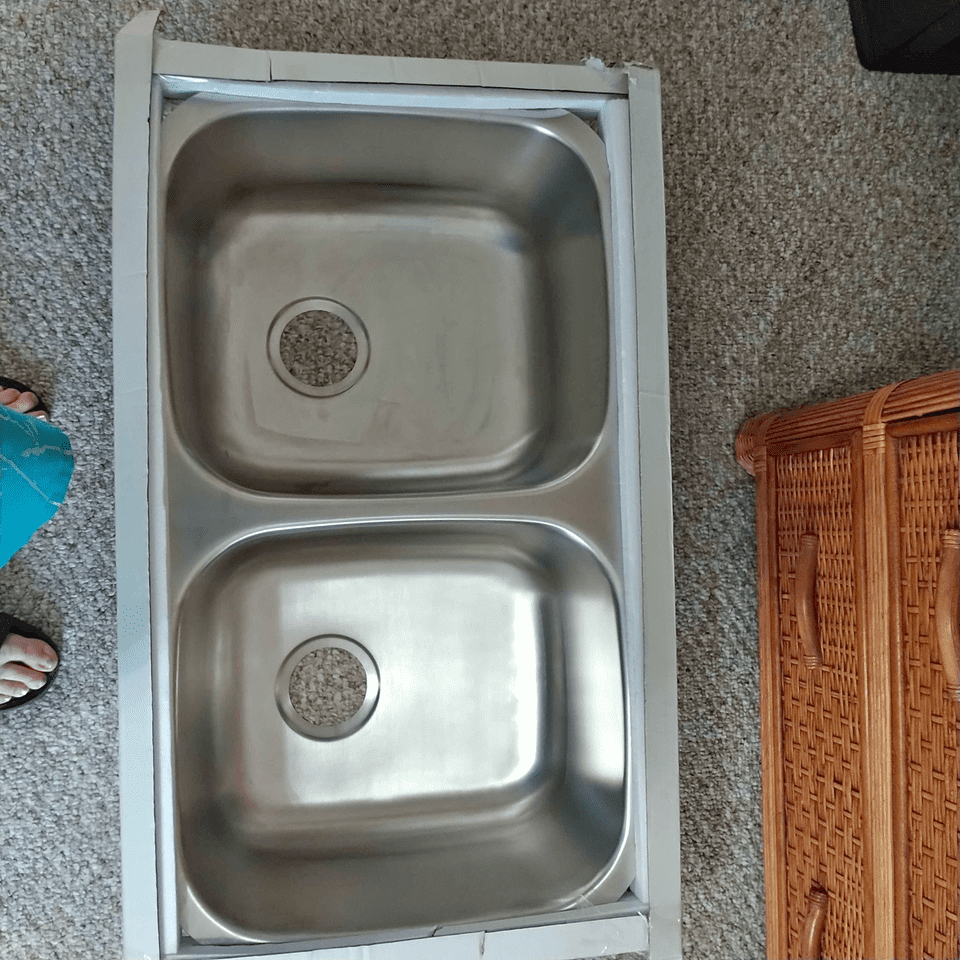
What Is a Stainless Steel Sink?
A stainless steel sink is a blend of nickel and chromium. Additionally, this blend allows the sink to withstand hot and cold temperatures.
In addition, stainless steel reacts with oxygen and creates a protective layer that renews itself continuously. Plus, it can tolerate intense temperatures and, most importantly, is non-corrosive.
Pros
As we know that almost 70% of sinks are stainless steel, let us understand why. Here are some key factors why people prefer stainless steel over any other material.
Affordable
Based on the sink you select, the cost of a stainless sink will roughly begin from $70 and can go up to $1000 or more. According to the installation, whether a drop-in or undermount sink directly affects the cost. For instance, a drop-in stainless steel sink can cost you $150-$300, while an undermount sink will cost $200-$500.
Therefore, stainless steel is more budget-friendly than any other sink material in the market.
Durable
By far, the most durable and long-lasting material is stainless steel. Although there is a possibility of denting, high-quality steel might not dent. The nickel and chromium withstand heavy items, hot vessels, and chemicals (to an extent).
Easy to Clean
Without a doubt, stainless steel is easy to clean. Firstly, the material is resistant to corrosion. In addition, the material is pore-free that makes it extremely easy to clean.
And, most importantly, stainless steel sinks are hygienic. With the rising health awareness because of the pandemic, people are starting to give importance to health and hygiene.
Hence, they lean towards stainless steel rather than granite or other materials.
Cons
A reliable material like stainless sinks indeed comes with some setbacks.
Limited variety
You will have a limited collection to choose from if you’re buying stainless steel sinks. They may be available in various shapes and sizes but not in colors. The reason is, the steel cannot be colored.
Susceptible to Scratches and Dent
If you don’t use your pots, pans, and other items cautiously, you might end up scratching the sink surface. Although it is easy to clean, it develops hard water stains. Additionally, if your sink has thinner gauge steel, it may even dent.
Tip -16-18 gauge steel is suggested for everyday use. Steel above 20 gauge is likely to dent.
Noise
One of the major concerns of people buying or buying thinner steel sinks is noise. It is perhaps not the quietest sink. With the noise of the washing vessels, we can also hear the water running in the sink.
Did you know?
A regional analysis report by Global Market Insights proposes that stainless steel will possibly see an increased growth by the year 2027 for the benefits it provides a household.
Here is a chart pointing out the characteristics of the stainless steel sink on a scale of 10.
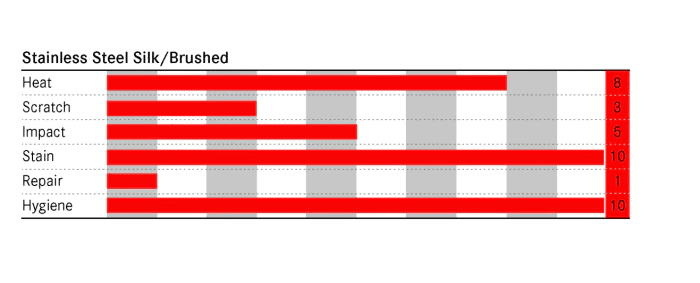
Since we have brief information on both the sinks and their pros and cons, let us explore the three key differences between the two.
3 Major Differences Between Stainless Steel and Ceramic Sink
Versatility
If you’re a person of peculiar choice and taste, choosing ceramic over stainless steel will make more sense because of the limited variety of options concerning color and shapes in stainless steel.
Functionality
In the kitchen especially, functionality becomes the reason to choose stainless steel over ceramic. It can withstand hot and cold temperatures and will last long. Even though ceramic can also be functional, we cannot neglect that the hot items, metal items can crack the sink.
Cost-effective
One of the crucial factors while selecting a kitchen or bathroom sink is cost. According to the cost of the sink, it is fair to choose stainless steel over ceramic. If you’re getting the same durability and ease of cleaning stainless steel sink at almost half the cost of ceramic, then why not!
OVERVIEW
| Ceramic | Stainless steel | |
| Appearance | Traditional | Modern and contemporary |
| Installation | Easy installation (except for undermount) but takes times | Easy installation within no time |
| Size, shape, color | Diverse variety | Limited variety |
| Durability | Sturdy and strong | Extremely strong and environmentally friendly |
| Care and maintenance | Low maintenance and easy to clean | Low maintenance and easiest to clean |
| Noise | Less noise and vibrations | Loud and noisy |
| Life expectancy | 25-30 years | 15-30 years |
| Cost | It starts at around $150 (excluding installation charges) | Starts at around $70 (may change based on the installation type) |
| Resale value | It depends on the condition | It depends on the condition |
Detailed Comparison
We have covered the basics of the two materials. But, let us see how these two perform in the below-given parameters. It becomes vital because these are the deciding factors while buying ceramic or stainless sinks.
Appearance
Although many ceramic sinks include a stainless steel interior, the look of the two could not be more different.
Due to the composition, ceramic sinks are relatively heavier than stainless steel and look appreciable. Often, sinks are coated, using enamel coating to create a lustrous and eye-catching traditional appearance.
Unlike ceramic, stainless steel sinks appear appealing with a contemporary look because of the clean edges. On the contrary, a round-edged sink will appear classic and modern. Stainless steel comes in multiple thicknesses creating a durable yet trendy look. The appearance of the sink enhances with the polish-finish and wired brush-finish.
In conclusion, both materials enhance your kitchen or bathroom layouts. Appearance can be subjective. Hence, choose what you like and what suits your home the best.
Installation
The installation depends on two things; countertop material and the installation type.
Ceramic and stainless sinks are available as drop-in sinks and undermount installation.
While installing a drop-in sink, both materials fit perfectly. However, we see more stainless steel undermount sinks than ceramic. Undermount ceramic sinks are generally found less mainly because of the weight of the heavy ceramic.
Another concern with ceramic is that it needs added mounting hardware to install. While the stainless steel sink holds up with 4-5 mounting clips, ceramic needs almost double clips to hold up the sink’s weight.
Ceramic sinks are also difficult to install because of their heavy weight, whereas stainless steel is easy to install and relatively lightweight.
In the end, stainless steel is easier to install than ceramic sinks.

Sizes, Designs, and Colors Available
There exist many shapes, sizes, and colors available in ceramic sinks. If not, you can arrange a color of your choice that complements your house within the color palette provided by the shop.
On the contrary, stainless steel is either pressed or welded in the shape of a sink. Therefore, even though there are options to choose from in shapes and sizes, there are no color options.
It is confusing when you have limited options to choose from, and hence, you can opt for ceramic over stainless steel for its versatility.
Durability
Isn’t durability what we look for while buying a sink of a particular material?
Yes, it is indeed the most deciding point. Ceramic gets its durability from its construction. The high temperatures from which the ceramic goes through make the sink more durable. The sink only gets damaged when metal items are thrown into the sink. Other than that, ceramic sinks can withstand everyday use.
As for stainless sinks, the durability comes from the gauge size. For instance, if you have 16 gauge steel, the steel will be thicker and more durable than 22 gauge steel. Additionally, it is heat and chemical-resistant.
To conclude, both the materials are durable, and it depends upon how you use and maintain your sink.
Care and maintenance
Cleaning, caring, and maintaining are easy with both materials. Both materials are relatively low maintenance, and this point stands out the best among the two materials.
Ceramic sinks are extremely easy to clean. Although the sink surface can be cleaned using mild abrasive cleaners. Stains, hard water deposits, and minor scratches should be treated using mild abrasives cleaners and a soft cloth/sponge. However, ceramic is likely to be scratched, cracked, or chipped if you throw the vessel into the sink.
Note –Use hot pans, pots, metal items cautiously on a ceramic sink. Avoid cleaning ceramic sinks using bleach or harsh chemicals, as they damage the sink surface.
Stainless steel practically can withstand any cleaners. Unfortunately, steel sinks often tend to dent or scratch. However, if you have a brush-finished, they are less prone to scratches and hard ward deposits. If you have a mirror-finished sink, you need to dry the sink after use to prevent these deposits from showing.
Cleaning, care, and maintenance highlight the two sink materials.
Noise
Generally, ceramic sinks are thicker and bulky, and hence, do not make loud noises, unlike steel.
On the other hand, stainless sinks are relatively thinner. Thus, they often vibrate and make a loud noise when running water or putting vessels into the sink. However, to reduce the noise, stainless steel manufacturers can soundproof the sink by padding or coating the bottom of the sink.
Tip –You can soundproof your kitchen sinks with simple techniques.
Therefore, if you’re a person who likes washing dishes quietly, you choose ceramic over stainless steel.
source quietden.com
Life expectancy
While both the sinks have a long life expectancy, ceramic lasts longer than stainless steel. Ceramic sinks often show a life span of 25-30 years or even more. Particularly, cast iron sinks have the highest life expectancy.
And stainless steel sinks last up to 15-30 years. The life expectancy generally depends upon the material, how well you use the sink, and how you take care of the sink.
Bonus tip –The better each sink is cared for and maintained, the longer it will survive.
Cost
While comparing the cost, you should understand that the size, shape, color, and installation type affect the cost of the sink directly.
As discussed in the pros and cons of the two materials, ceramic sinks are almost double the cost of stainless steel.
To conclude, stainless steel is affordable and eco-friendly than ceramic sinks.
Resale value
The sink condition determines the resale value, be it ceramic or stainless sink.
Ceramic should be clean and have retained its glaze with no scratches or cracks. And stainless steel should be clean, stain-free, and scratch-free.
In this case, stainless steel will be an appropriate choice as it doesn’t require re-glazing and does not chip, unlike ceramic.
Final thoughts
Both ceramic and stainless steel carry some advantages and some disadvantages. In terms of maintenance, they are easy to clean and maintain. Ceramic comes with a diverse variety of designs and colors than stainless steel.
Ultimately, it boils down to your preference, choice, and taste. The decision lies with you. However, both the materials are the most recommended than others in terms of sink materials.
![What Are Kitchen Sinks Made Of ? [13 Types+Pros & Cons] What Are Kitchen Sinks Made Of ? [13 Types+Pros & Cons]](https://houseadorable.com/wp-content/uploads/2022/01/Sink-MAterial.jpg)
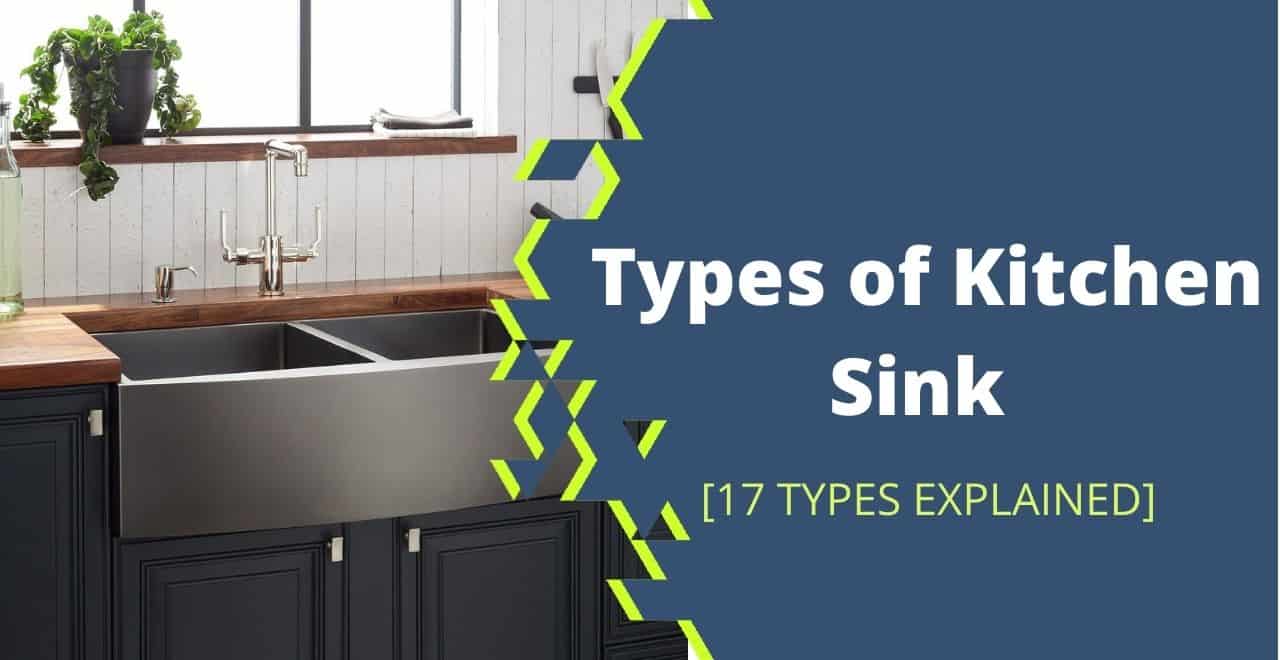
![How to Darken Copper Sinks? [4 Simple Natural Methods] How to Darken Copper Sinks? [4 Simple Natural Methods]](https://houseadorable.com/wp-content/uploads/2022/01/copper-sink.jpg)
![Fireclay Vs Stainless Steel Sinks[7 Key Differences+Pros & Cons] Fireclay Vs Stainless Steel Sinks[7 Key Differences+Pros & Cons]](https://houseadorable.com/wp-content/uploads/2022/01/Fireclay-sink-3.jpg)
![Granite Vs. Marble Vs. Quartz Countertops [12 Differences+Pros & Cons] Granite Vs. Marble Vs. Quartz Countertops [12 Differences+Pros & Cons]](https://houseadorable.com/wp-content/uploads/2022/03/quartz-marble.jpg)
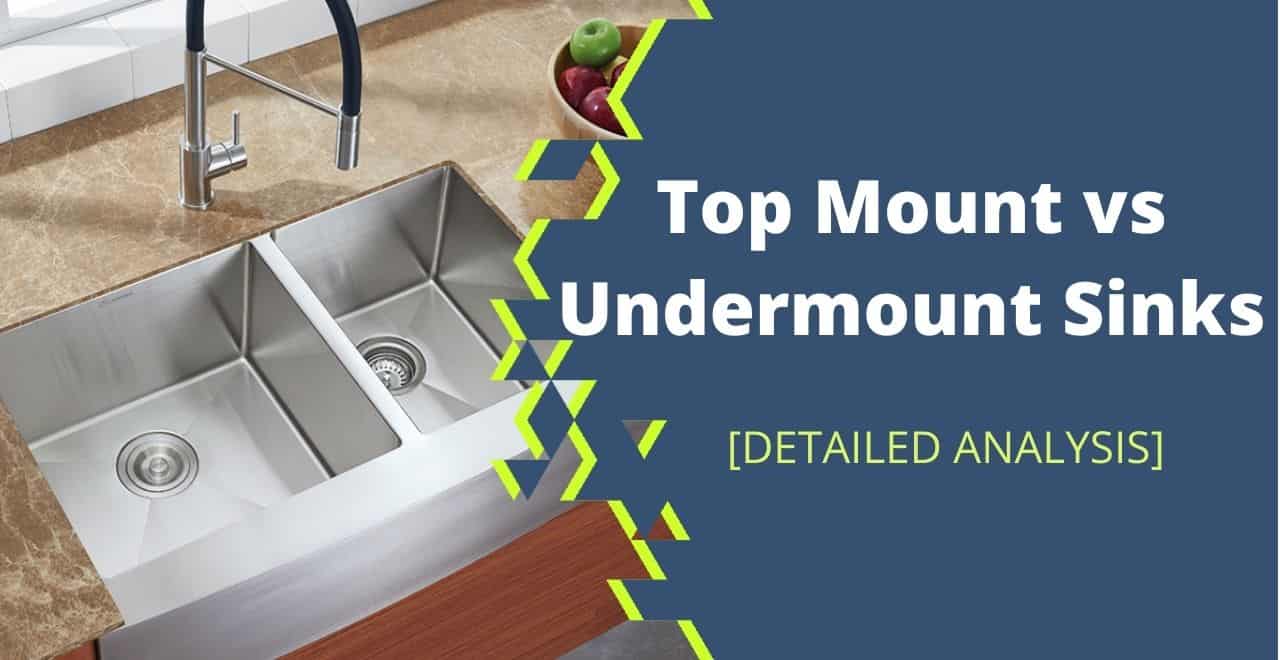

![Granite vs. Laminate Countertop [Pros and Cons+10 Key Differences] Granite vs. Laminate Countertop [Pros and Cons+10 Key Differences]](https://houseadorable.com/wp-content/uploads/2022/03/Granite-vs.-Laminate.jpg)